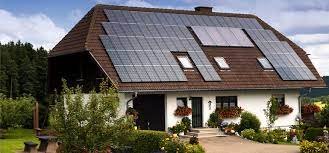The world is becoming more conscious of the need to make our planet a better place. We must take steps in this direction. There are various ways in which we can make our homes sustainable and eco-friendly. One way to do this is using renewable energy sources for power generation. For example, a house can be powered by solar, wind, or geothermal energy. These renewable energy sources are clean and do not produce any toxic gases like those produced by fossil fuels. They also do not make any carbon dioxide emissions contributing to global warming.
There are many reasons why you should power your home with renewable energy. First of all, it is environmentally friendly and will help reduce the amount of pollution in the air. Secondly, you will save money on your electric bill. Thirdly, it will be more reliable than other forms of energy because it is not dependent on fossil fuels or the weather. Fourthly, tax credits and rebates are available for people who invest in renewable energy sources. Finally, if you have a solar panel system installed on your house, you can sell back any excess power to your utility company and make money!

Solar power

Solar power is becoming a more popular way to power homes. This is due to its many benefits, such as low-cost installation and maintenance, no emissions of greenhouse gases, and you can use it for daytime or nighttime use. The first step in powering your home with solar energy is deciding if you want to install a grid-tied or off-grid system. Grid-tied systems are connected to the electric utility grid and are powered by sunlight when the sun is shining. Off-grid systems are not connected to the electric utility grid and must operate independently.
Solar heating

Solar heating converts sunlight into heat, either directly using solar collectors or indirectly using a solar thermal collector to heat water or another fluid that heats the air. Solar heating systems are best for heating water and space heating. However, they are not very efficient at producing electricity, although this is changing with new technologies emerging in the market.
Solar heating uses solar energy to provide heat for a building or other structure. This is done by collecting and storing the sun’s thermal energy in liquid or air-filled tanks. The benefits of solar heating are that it reduces dependence on fossil fuels, is sustainable and cost-effective, and provides an opportunity to generate electricity.
Biomass systems
Biomass is renewable energy that you can use to power homes. Biomass is a fuel that comes from organic materials like wood, paper, and other plant-based materials. Biomass systems are heat source that uses biomass fuels to create heat and power for homes. They are an alternative to traditional heating systems or furnaces. Biomass systems work by burning the biomass fuel in a combustion chamber where it produces heat. The heat then transfers into the building through pipes or ductwork and provides the home’s occupants heating.
Hydroelectric systems
A hydroelectric system is a renewable energy system that uses the potential of water to generate electricity. It is the most common type of renewable energy and is one of the oldest sources, with examples from ancient Rome. The turbine spins when water falls or runs through, spins a generator, and produces electricity. The turbine can be located at the bottom of a waterfall or the top of a dam.





